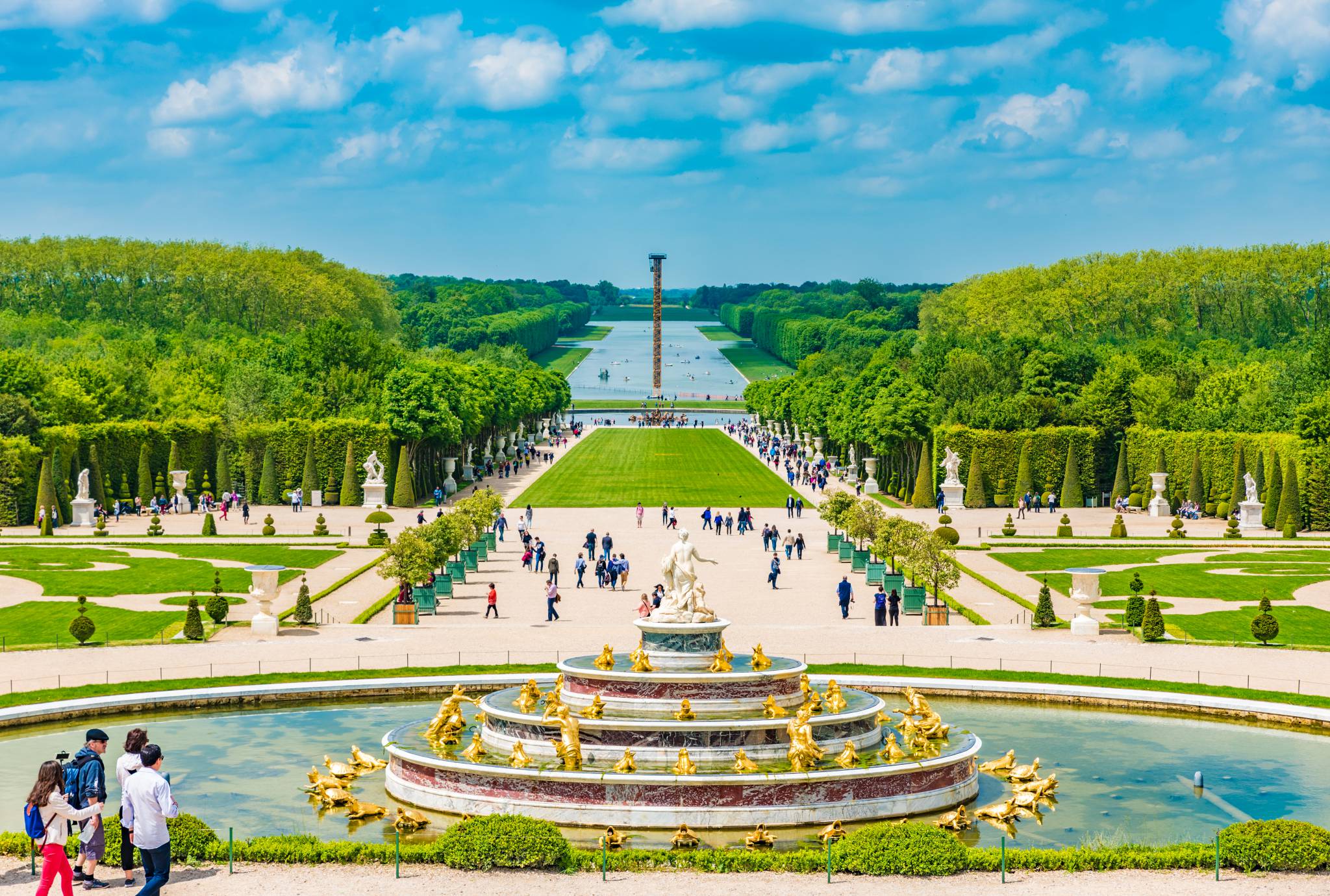The royal palace of Versailles with its expansive gardens and massively intricate architecture is considered one of, if not the most, famous attractions in the Île-de-France region of France. Built by King Louis XIV, it has been home to three generations of French kings and queens from 1682 until the beginning of the French Revolution in 1798. As a result, each monarch was able to add new additions to the palace estate making even grander and majestic than it originally was. There is a lot see at here as the entire estate is 2,014 acres and so it's best to plan ahead. Be sure to download the Palace of Versailles Travel Guide and Offline Map to help you to maximize your trip.
1. Estate of Trianon
Thies intimate estate is famously associated with Queen Marie-Antoinette and thus fondly called the Marie-Antoinette estate. Construction of the estate started under King Louis XIV. It was once called the "Marble Trianon" for the unique pink marbles panels that adorned the palace's facades. Marie-Antoinette is known to seek refuge and spent most of her time away from the prying eyes of the royal court in the marvelous rustic-style cottages of the Trianon. The cottages are surrounded by marvelous gardens with ornate geometric flowerbeds and tens of thousands of flowers.
2. Hall of Mirrors
The Hall of Mirrors is the most prominent feature at the Palace of Versailles. It was originally built as a terrace that stood between the King and Queen's bedchambers. The open-air terrace overlooking the gardens was soon remodeled due to being exposed to bad weather. When the hall was finished it served as a passageway and waiting area to impress his guests. The Treaty of Versailles, which officially brought the First World War to an end, was signed here in the Hall of Mirrors on June 28, 1919.
3. Leto’s Fountain
The palace estate has eight majestic fountains that you can visit, but one of the notable ones is the Leto's Fountain. It was inspired by The Metamorphoses by Ovide. It illustrates the story of Leto, the mother of Apollo and Diana, protecting her children from the insults of the peasants of Lycia and pleading with Jupiter to avenge her. Jupiter agrees and turns the inhabitants of Lycia into frogs and lizards. The central marble pyramid depicts Leto and her children.
Learn more about other destinations that offer unique experiences by checking out eTips.



